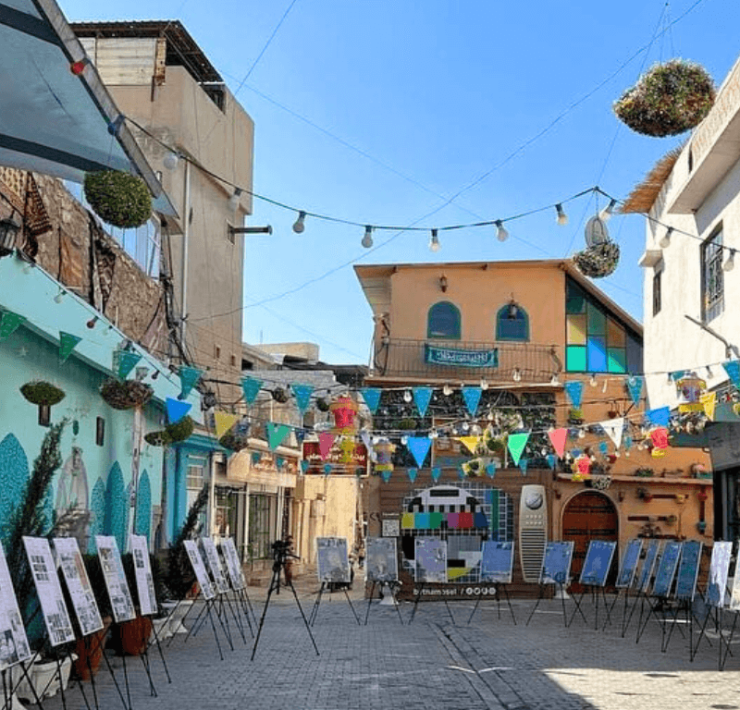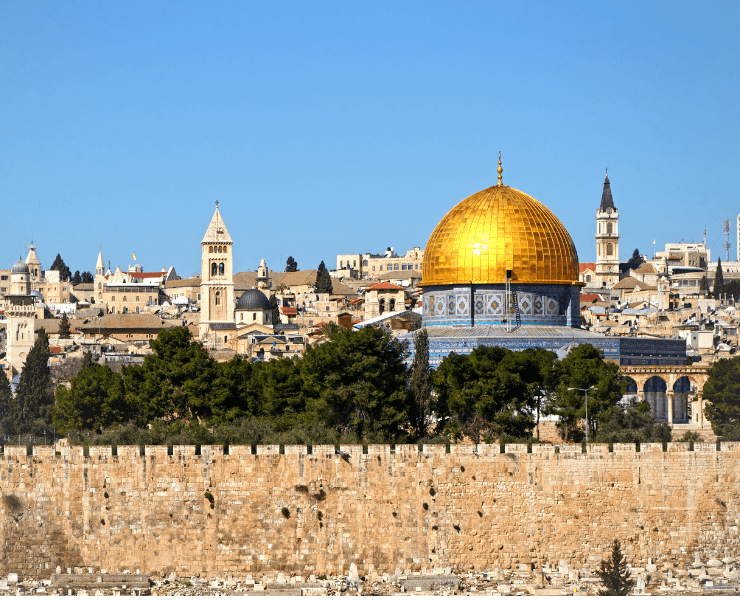The Middle East is famous for its rich cultural heritage and traditional crafts, from the detailed stitching of traditional clothing to spectacular tiled mosque facades and the intricate artistry of Arabic calligraphy.
We’ve put together this list of three beautiful traditional Middle Eastern crafts that you can learn and practice at home, for those looking for a creative outlet or who want to learn something new. Below you’ll find everything you need to get started with Arabic calligraphy, Palestinian embroidery, and Islamic geometric art, including information on their origin, what tools and materials you need, and who to follow for inspiration.
1. Arabic calligraphy
Arabic calligraphy, or Islamic calligraphy, is the practice of artistic writing using the Arabic script to create beautiful designs and artwork. There are various different styles, although the development of Arabic and Islamic calligraphy is closely connected with the Quran and most calligraphy designs are based on Quranic chapters or verses.
 (image: MishkatMedia)
(image: MishkatMedia)
Calligraphy historically became a popular art form in the Islamic world because Islam traditionally prohibits the use of images in art in order to prevent people from worshipping images and idols. If you don’t already read Arabic, learning calligraphy is a beautiful way to get familiar with the script.
What you need to get started:
All you need to start creating beautiful designs is a piece of paper and a pen, and as you get more comfortable and creative you can branch into different colours and styles. There are literally thousands of blogs, YouTube videos, books and online courses to help you learn the different script patterns, and you can get started easily at home without paying a penny.
Who to follow for inspiration:


2. Palestinian Tatreez
Tatreez (Palestinian embroidery) is a centuries old artistic tradition passed down across generations of Palestinians from mother to daughter. Over the years, and particularly as the Palestinian diaspora have put down roots outside of their homeland, Palestinian embroidery and the key role it plays in traditional Palestinian costumes have become symbolic of Palestinian cultural heritage and the Palestinian cause.
 (image: Wafa Ghnaim, Tatreez and Tea)
(image: Wafa Ghnaim, Tatreez and Tea)
The beautiful art of Tatreez ranges from simple cross-stitch work to more complex designs and diverse motifs. Among the most popular and common colours are deep reds, which were traditionally created using natural dyes from insects and pomegranate.
What you need to get started:
All you need is a needle, some embroidery thread in whatever colour(s) you choose and some embroidery canvas fabric – all available at minimal cost on Amazon, or perhaps you have a grandmother who might have some lying around in a bottom drawer! The kind of fabric you’ll want to use will depend on the project, but to begin with you can use whatever you can find. You could even get started on plastic mesh canvas sheets to help you get comfortable with the stitches.
Like calligraphy, there are a ton of YouTube videos and online guides, and if you search ‘tatreez’ or ‘Palestinian embroidery’ on Instagram and Pinterest you’ll find hundreds of Tatreez patterns, designs and ideas to get you going.
Who to follow for inspiration:

The Tatreez Circle @thetatreezcircle

3. Islamic geometry
Similarly to calligraphy, Islamic geometric art rose to prominence not only as a result of its exquisite beauty, but also due to its avoidance of images. Islamic geometric designs consist of combinations of squares and circles, often overlapping and interlacing with one another.
 (image: Aziza Iqbal)
(image: Aziza Iqbal)
These geometric patterns adorn mosques all over the world, as well as beautiful mosaic walls and floors of buildings associated with Islamic and Arabic architecture. Today, Islamic geometry is still practiced by artists in the region and beyond, some creating intricate tiled mosaics and others using watercolour paints.
What you need to get started:
Your most important instruments are a compass (for drawing circles) and a ruler or straight edge (along with a pencil and paper, of course. Once you have those, the rest is up to you – you can create elaborate designs with whatever pens you have lying around the house, although watercolour paints also work beautifully with geometric designs.
Who to follow for inspiration:




We hope this post has inspired you to get creative! Let us know if you try any of these out at home – we’d love to see your creations, so don’t forget to tag us in your pictures on social media (@pink_jinn). We’d also love to hear about any other Middle Eastern crafts that we could all try. Comment below to let us know if you have any ideas!
If you enjoyed this, you might also like:
5 traditional Middle Eastern dishes to try at home


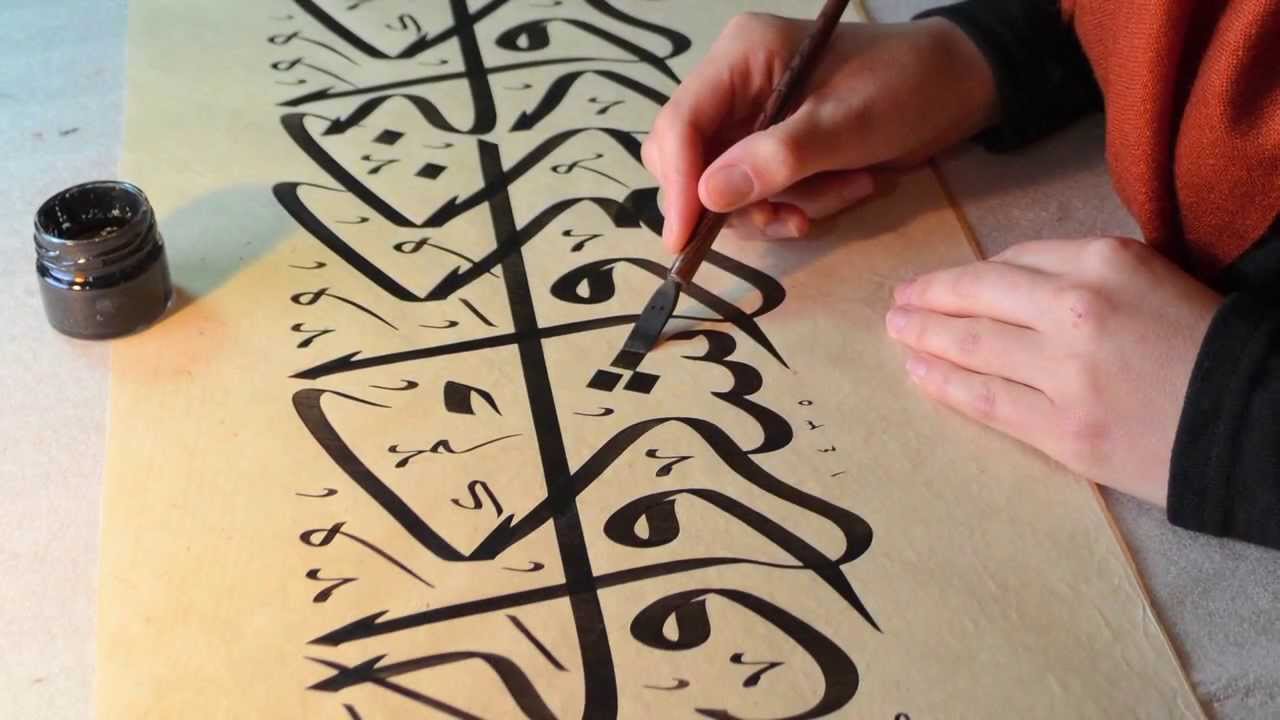 (image: MishkatMedia)
(image: MishkatMedia)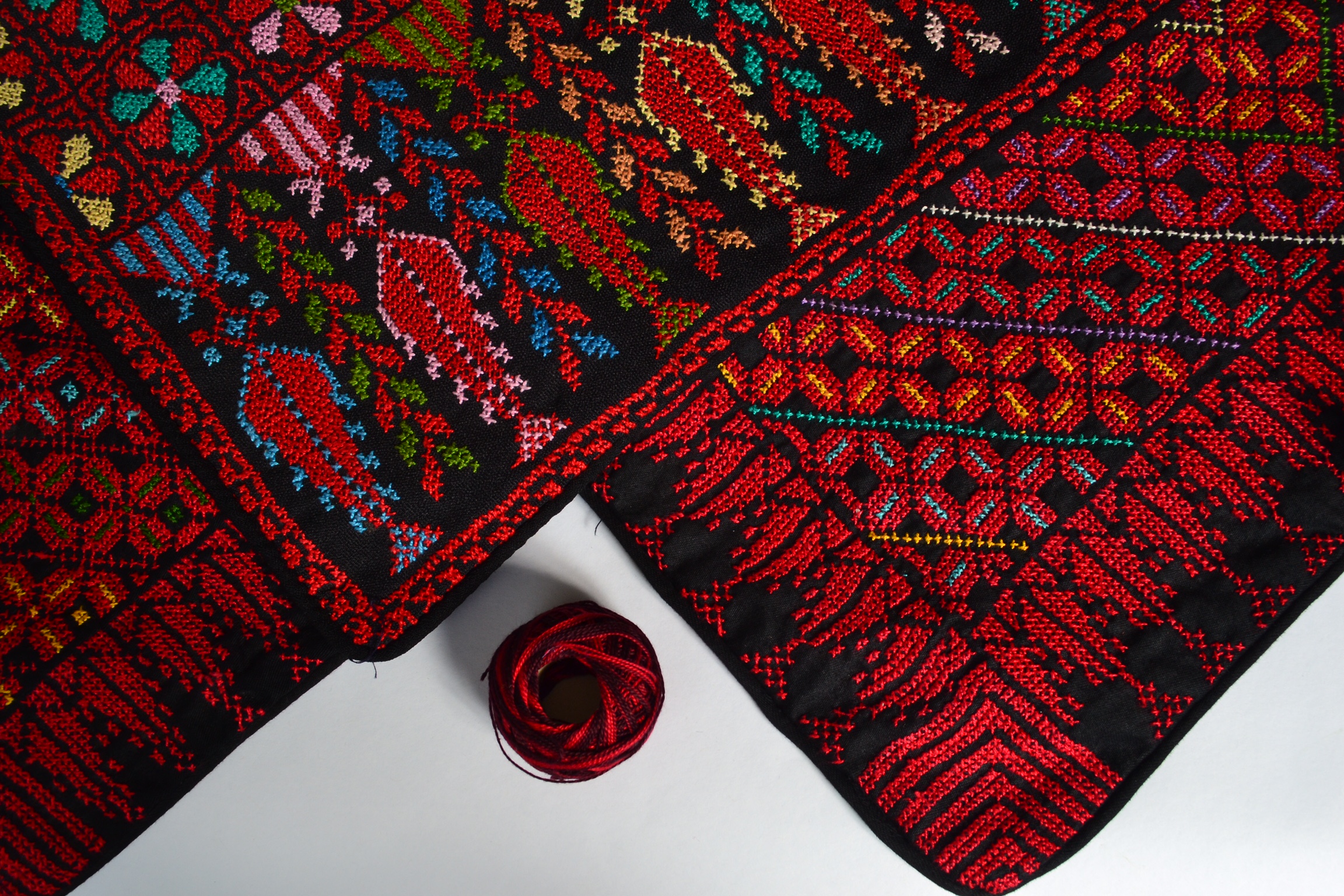
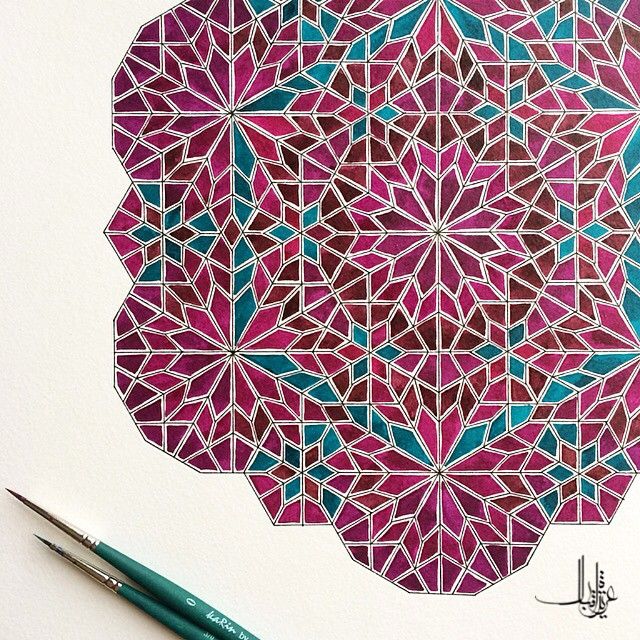 (image: Aziza Iqbal)
(image: Aziza Iqbal)
